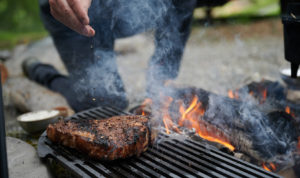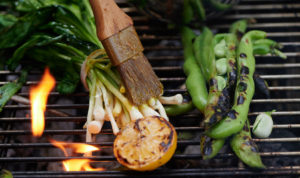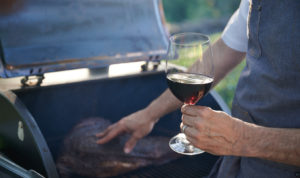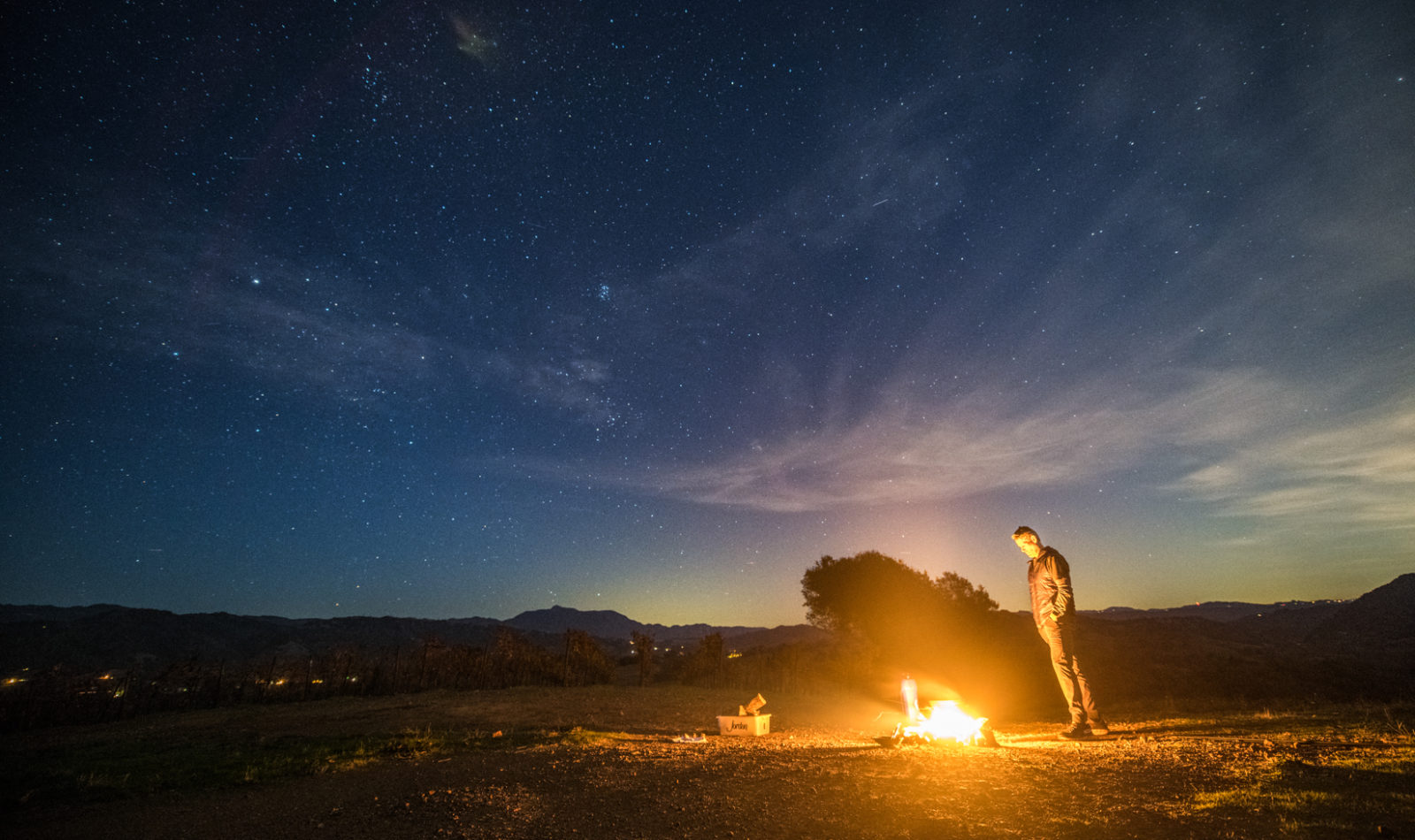
Five Types of Grills and Smokers: Chef’s Choices
The invention of the backyard grill paved the way for a fascinating evolution of live-fire cooking tools since the midcentury. We use many types of grills and smokers to achieve the flavors desired for our winery’s cuisine. Take a look inside our red-hot devices and techniques that now allow me and my fellow chefs to blur the lines between primal and modern.
When early humans learned to build campfires hundreds of millennia ago, it didn’t take long for them to figure out that cooking food over open flames was a culinary game-changer. Giant mastodons never tasted so good. When humans eventually moved from caves to houses, they kept the culinary fires burning in their kitchen fireplaces and hearths—which was pretty much the only option until the first commercially produced gas stoves began production in the 1830s.
It wasn’t until the 1950s, with post-war suburban life in full swing, that backyard grilling became a great American pastime. This was thanks, in large part, to the invention of the Weber kettle grill in 1952. Back then, Chicago-based Weber Brothers Metal Works made harbor buoys, and it was that buoy shape that inspired Weber employee George Stephen to design a bowl-shaped charcoal grill topped with a lid. This was a major improvement over the flat, open-top charcoal brazier commonly used at the time, because the Weber’s domed lid gave grillers better heat control, sealed in flavorful smoke and protected food from the elements.
Today, almost two-thirds of adults in the United States own a grill or smoker, according to the Hearth, Patio & Barbecue Association, and an estimated 3 billion people around the world still cook their meals over open flames. Live-fire cooking has become a focal point of many American restaurants too, and the trend continues to gain momentum. There’s even an official list of America’s best live-fire restaurants selected by a hive of top food writers, and most of the honorees opened their doors in the last five years. The world’s oldest cooking method has truly enthralled our nation—for date nights out and dining in.
While the Weber remains an American classic, chefs and other grilling enthusiasts across the country have been playing with fire ever since the buoy-shaped game-changer hit the market. In the decades since its introduction, an ever-expanding array of cooking vessels—including modern twists on centuries-old devices—have been helping backyard barbecuers take fire-inspired cooking to the next level. Here’s a look at five types of grills and smokers that I believe are the darlings of professional chefs and adventurous home cooks alike.
Five Types of Grills and Smokers Made for Chefs and Home Chefs
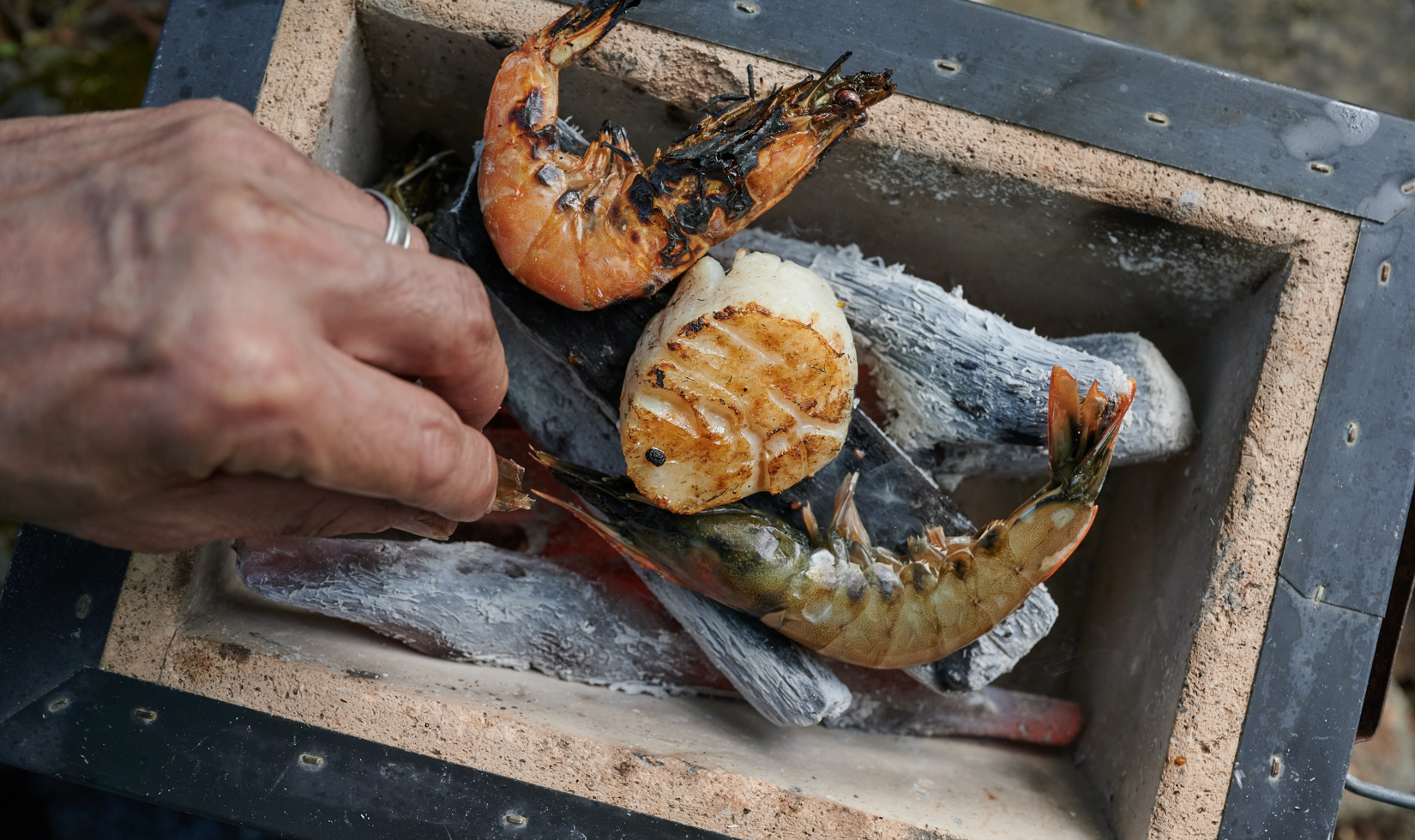
Konro Grill
The original Japanese versions, which date back to the 8th century, were made from clay-lined cypress wood. Now, the tabletop grills are mainly crafted from stainless steel or bricks made with diatomaceous earth, a natural material known for its heat-retention properties.
The konro’s popularity has seen a remarkable surge in recent years among America’s top chefs. Due to its narrow, box-shaped design and grid-like surface, this grill is ideal for cooking chicken, vegetables and other small bites, and its compact size makes the konro easy to transport. Japanese yakitori, the popular skewered chicken dish cooked on a konro, has led to the konro’s “yakitori grill” nickname.
The grill runs on clean-burning binchotan charcoal, which can quickly reach and retain molten-hot temperatures. I exclusively use the hot-burning coals with Jordan’s Korin konro grill. It produces clean flavors, with very little ash and no smoke. There’s a precision and consistency to the heat that gives me and any home chef ultimate control. There are also no flame flare-ups common with American charcoal, which lead to burnt flavors. Konro cooking has a delicacy to the smoke and the flavors you simply can’t achieve with traditional charcoal grilling.
I try to stay true to tradition when cooking on a konro; favorite recipes are a form of yakitori, such as skewered wild mushrooms (matsutake, in particular), salmon, shrimp, oysters, scallops and braised pork belly. I also like to surprise my guests with konro lamb burgers.
A 21-inch konro grill sells for $220 at korin.com. Kinka and the Bincho Grill make popular models priced from $300 to $500.

Big Green Egg
Over the centuries, different cultures adapted the green egg design to suit their needs. In Japan, it morphed into the mushikamado, a rice-steaming device that included a damper and draft door for better heat control.
After encountering kamados in Japan while serving in World War II, many American soldiers shipped them home to the U.S. and adapted them for grilling. The cooker remained in relative obscurity until 1974, when one of those American serviceman, Ed Fisher, began selling imported kamados in his Atlanta store. Because the original clay cookers were fragile, Fisher tweaked the design to create a more durable ceramic model with better heat insulation. He dubbed it the Big Green Egg.
Today, most kamado grills are ceramic rather than clay. Extremely fuel-efficient, they have excellent heat retention at temperatures of 750 degrees or more, and can be used for grilling, smoking and baking.
Within the different types of grills and smokers, the Big Green Egg is the most well-known kamado grill. But I have another favorite. I use a Primo XL kamado, an all-in-one grill that includes a cradle, grid lifter, ash tool and side shelves, to cook everything from roasts to pizza. Released in 1996, the Primo can upstage other green egg models with the addition of a ThermoWorks Billows temperature-control fan kit, which retails for $69. The grill will hold at a low temperature, or I can completely open the vent and lid, and the temperature will rise quickly. The fan can be controlled by an app, so it gives me complete temperature control from virtually anywhere. It’s almost cheating.
Big Green Egg models range from $300 to $2,000; Primo XL retails for $1,800.
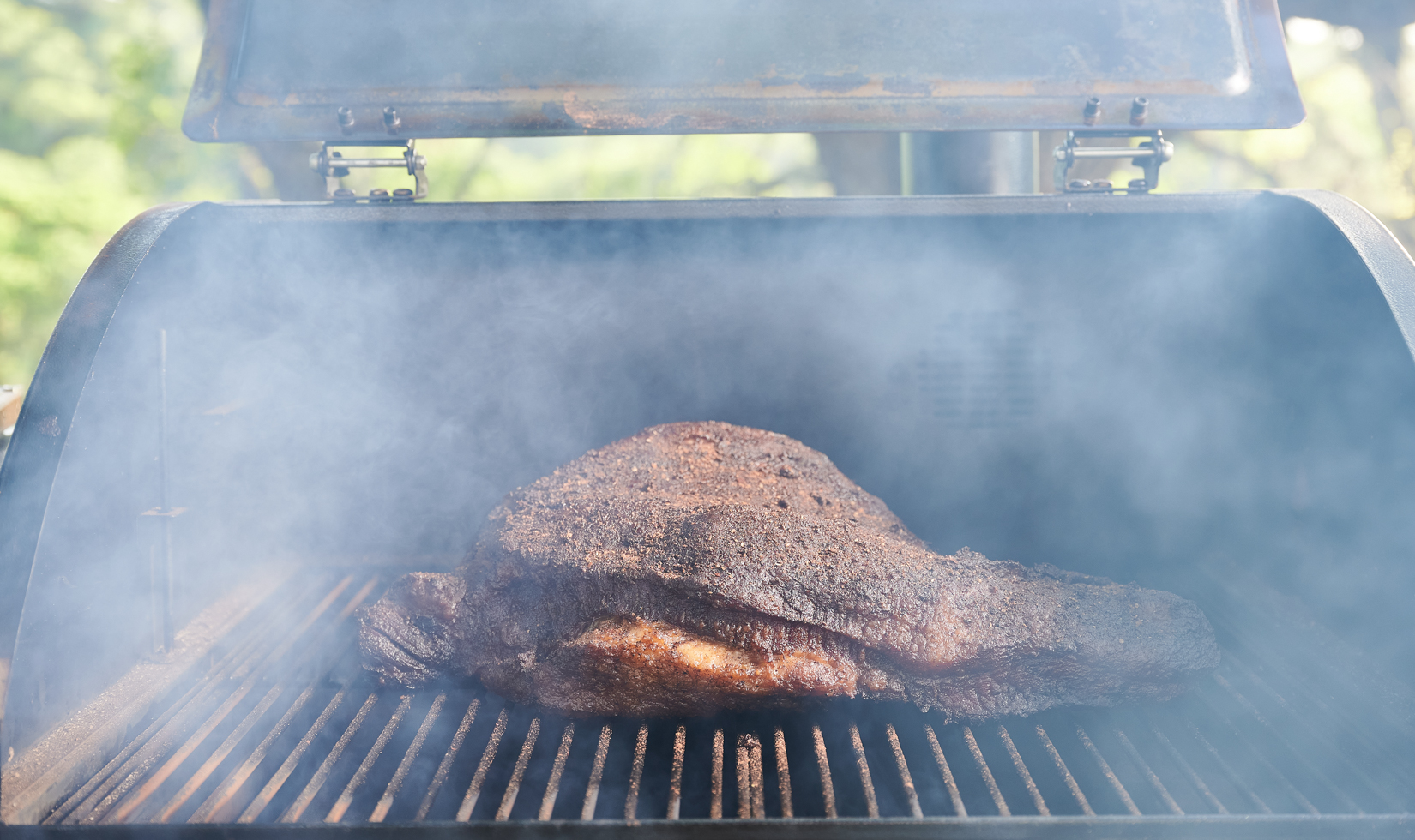
Pellet Smoker
As the legend goes, Traeger—who’d been tinkering with wood pellet stoves for his family’s heating business—kicked over the flaming grill and vowed to build a better barbecue. In 1988, the first Traeger pellet grill hit the market.
Traeger’s barrel-shaped invention has since become a favorite of chefs and competition-level smokers, due to its ability to bake, sear and smoke using compressed hardwood pellets. Just add fuel to the hopper and pellets are funneled into a rotating auger and fed into a firepot. A controller monitors the cooking process and automatically adjusts the heat to the user’s chosen temperature, for hands-off smoking.
Pellet smokers are prized for their fuel efficiency—a pound of pellets provides at least an hour of cooking time—and versatility. Fuels are available in different varieties of wood, such as mesquite or apple, allowing cooks to tailor the fuel’s flavor profile to whatever they’re cooking. Many contemporary smokers even include WiFi, so users can control cooking temperatures from their smartphones.
I particularly like Camp Chef smokers, paired with Smoke Daddy’s Magnum P.I.G. Cold Smoke Generator for about $200. It allows me to do delicate smokes on seafood, such as scallops or abalone, and is also ideal for making our smoked salts, as well as smoked olive oil and smoked salmon.
I like to use Camp Chef’s premium hardwood pellets, known as the Competition Blend, to cook brisket. This produces a long, true barbecue. You get the perfect temperature and smoke control in an extremely efficient package.
Camp Chef Woodwind pellet smokers range from $500 to $1,600. Competition Blend pellets sell for $18.
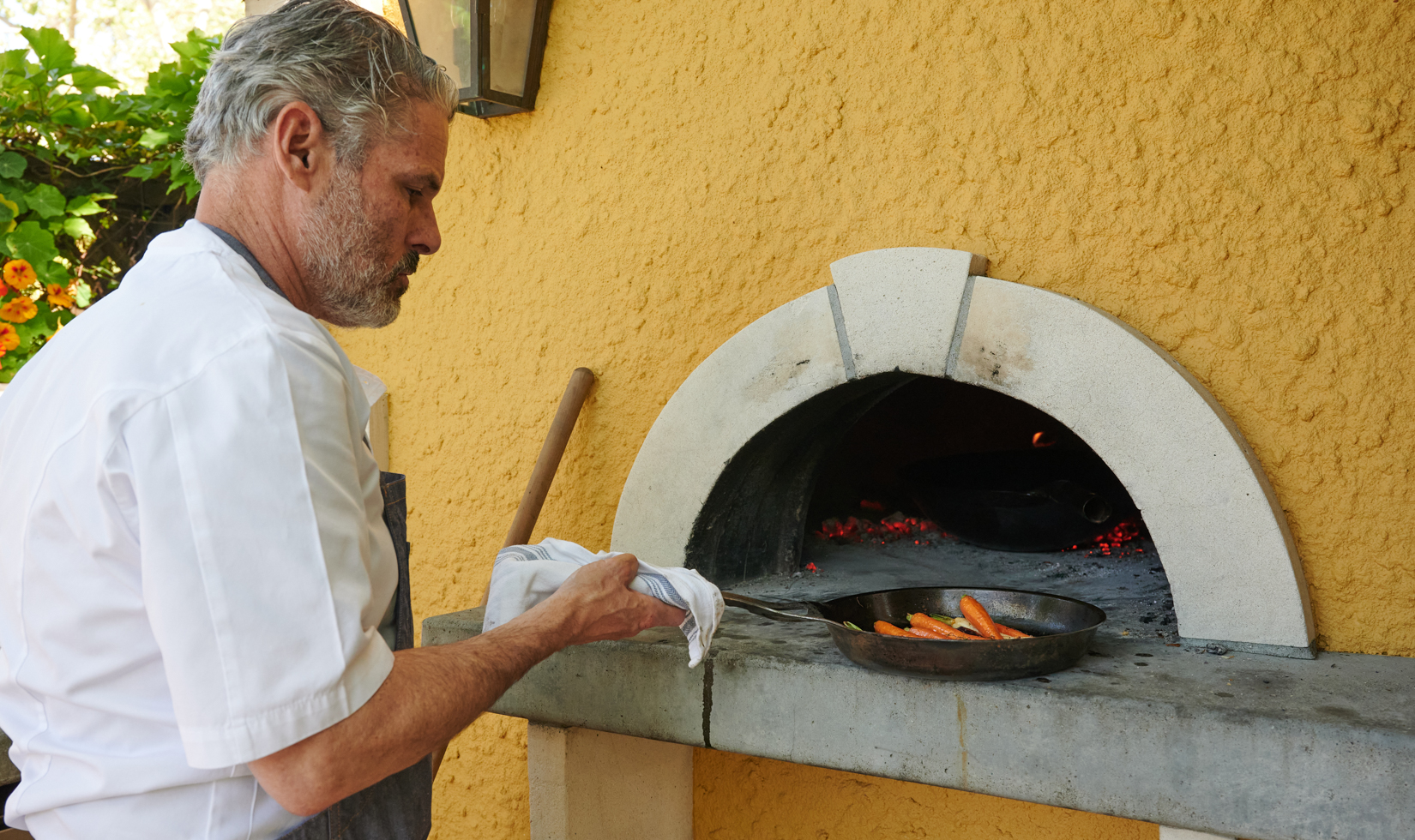
Mugnaini Wood-Fired Oven
During visits to Italy as an importer of Italian wines and olive oils, American entrepreneur Andrea Mugnaini fell in love with wood-fired cooking. Sensing a business opportunity, she partnered with Italy’s Valoriani family—whose 1946 pizza oven design is still considered the industry standard—to create a range of handcrafted wood-fired ovens for the North American market. She launched Mugnaini in 1989, setting the stage for today’s wood-fired cooking craze. Even more fascinating is the fact that she runs this national powerhouse out of a warehouse in Healdsburg, Calif.
Wood-fired ovens are not only beautiful, they can reach temperatures of more than 900 degrees, cooking pizzas in less than 90 seconds. Vegetables also cook in record time, which helps them retain their nutrients and imbues them with a delicious smoky flavor.
Our Mugnaini Forno is the centerpiece of my cooking arsenal. We use it at the winery almost daily to finish roasts, bake fruit tarts and housemade breads, and, of course, make pizzas. We even dehydrate tomatoes and fruit in the oven as it’s cooling overnight.
Mugniani ovens are completely customized, and prices start around $4,000 for the Piccolo 75. For those looking for a wood-fired oven without the price tag, Ooni makes models that use pellets or a combination of wood and charcoal for $300 to $600.
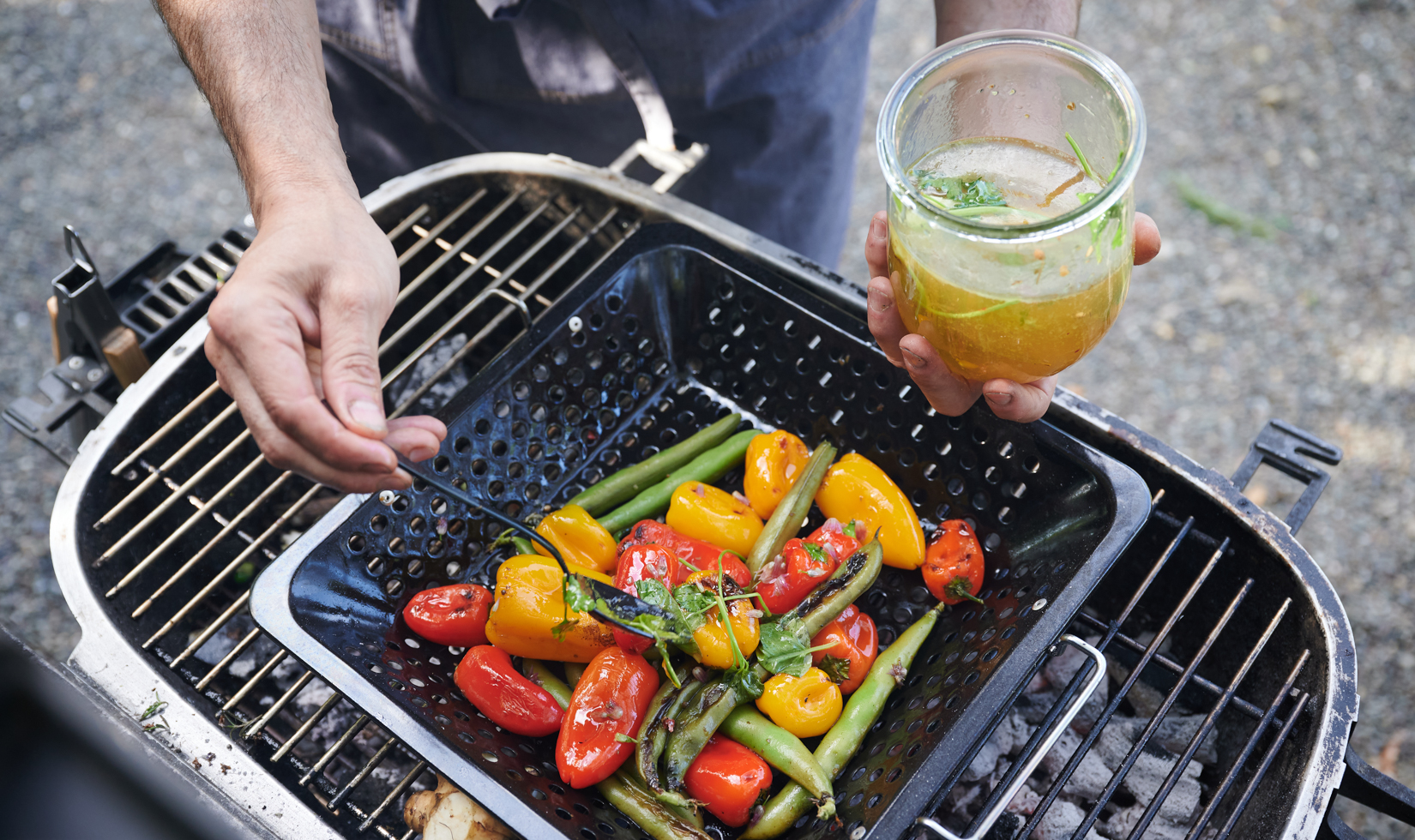
PK360 Grill + Smoker
Sporting a distinctive, capsule shape, the PK360 Grill was made of sturdy, non-corrosive cast aluminum and included a venting system that allowed for both high-heat grilling and slow cooking. The brand had a devoted following for the next three decades, but was eventually discontinued when cheaper gas grills came onto the scene.
Some 30 years later, attorney and PK enthusiast Paul James bought the intellectual property for the grill and revived the brand. In 2016, he and his partners launched the PK360 Grill + Smoker. An update on the original PK model, the 360 has four vents instead of two for precise airflow and temperature control.
Like the original PK, the 360 type of grill and smoker has attracted a cult following among chefs, barbecue pros and backyard grilling fanatics. It’s made entirely of aluminum, so it conducts heat better than steel, and it has a perfect design. It’s also really versatile, so it will grill, smoke and bake.
I turn to the PK360 when thick, bone-in steaks are on the menu. It allows me to quickly dial in a sear temperature for a thick steak, and just as quickly, I can bring the grill down to a slow roasting temperature for indirect cooking, so the meat is cooked evenly.
PK360 Grills retail for about $800.
Click here for more grilling tips and ideas, like our video on how to Grill Eggplant Perfectly.

